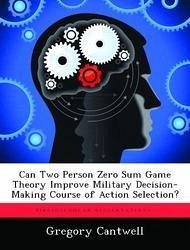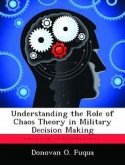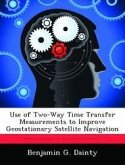Colonel (retired) Oliver G. Haywood suggested in his brilliant 1954 article, "Military Decisions and Game Theory" that game theory techniques were relevant to preparing the military commander's estimate of the situation. He based his article on work he had done as a student at the Air War College in 1950. Colonel Haywood demonstrated the utility of game theory by analyzing two World War II military operations. In each case, he examined the various friendly courses of action and compared them with enemy courses of action to determine the value of the predicted outcome. He concluded that military decision-making doctrine was similar to solving two-person zero-sum games. Finding the optimal solution for a two person zero sum game is not the challenge. With an understanding of how to solve a two person zero sum game matrix, the challenge remains to apply these concepts to the military decision-making process. How does a staff take a complex military situation and reduce it to a two-person payoff matrix? This study proposes a ten-step method to determine the military worth values of a two person zero sum game matrix. The proposed ten-step method organizes the information obtained in mission analysis and allows the commander to determine the optimal strategy for a military situation. These steps ought to be added to the current army decision-making process outlined in Army Field Manual: FM 101-5, Staff Organization and Operations, course of action comparison. This study provides a summary of the steps for determining the optimal solution for a two person zero sum game. The summary can be used as a memory aid in solving two person zero sum games. The appendixes provide the details of the proposed method for determining military worth for a two person zero sum game.
Hinweis: Dieser Artikel kann nur an eine deutsche Lieferadresse ausgeliefert werden.
Hinweis: Dieser Artikel kann nur an eine deutsche Lieferadresse ausgeliefert werden.








